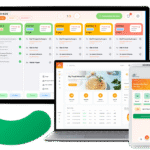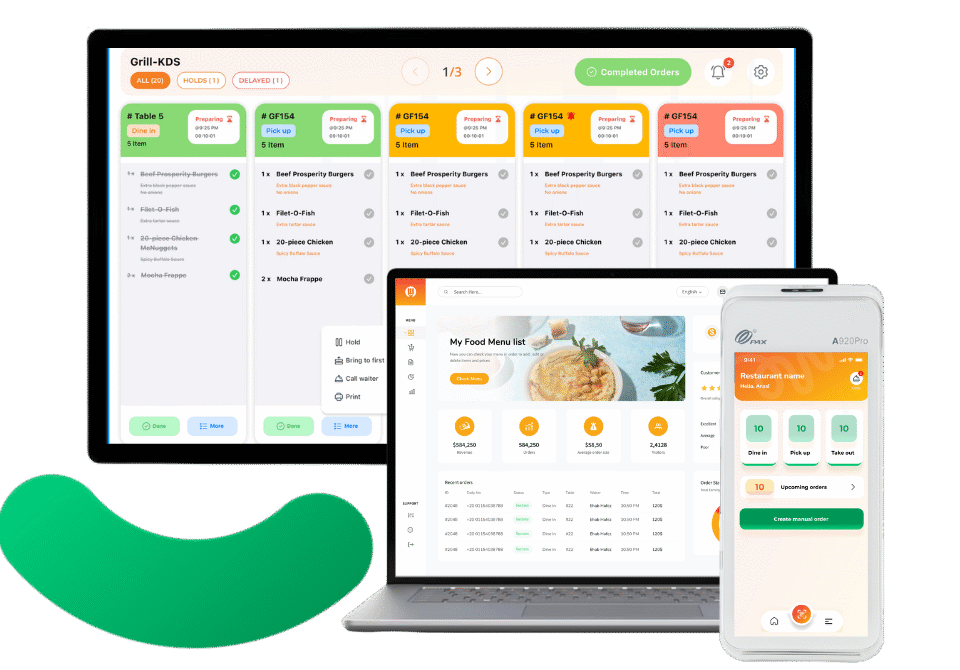
Why More Canadian Restaurants Are Switching to Waitery
August 5, 2025- android restaurant pos
- bill splitting
- call waiter
- contactless payments
- dine-in pos
- full-service restaurant pos
- guest-side order updates
- kitchen display system
- order management
- pay-at-table
- pos comparison
- qr code ordering
- qr menu ordering
- restaurant pos
- table mapping
- table-service pos
- toast pos
- toast vs waitery
- waitery
Toast POS vs. Waitery: Which One Is Better for Full‑Service Restaurants?
TL;DR: Toast is a popular, feature‑rich restaurant POS. Waitery is purpose‑built for dine‑in, table‑service workflows with QR menus, guest‑side order updates, Call Waiter, and pay‑at‑table. If you run a full‑service restaurant and want faster turns, fewer missed orders, and a smoother guest experience without adding staff, Waitery is the better fit.

Why this comparison matters
Choosing a POS isn’t just a hardware decision; it impacts speed of service, guest satisfaction, labor efficiency, and your bottom line. Full‑service dining has unique needs (table turns, mid‑order modifications, server coordination). This guide compares Toast POS and Waitery specifically for full‑service restaurants so you can pick the best long‑term partner.
Primary keyword targets: Toast POS alternative, Toast vs Waitery, full‑service restaurant POS, QR ordering for dine‑in, table service POS.
Quick verdict
If you’re a café or counter‑service concept that lives on kiosks and fast checkout, Toast is a solid choice. If you’re a full‑service, dine‑in operation where guests sit, browse the menu, add/modify items, call for help, and split or pay at the table—Waitery is built to shine. Explore the core flow on the Features page.
Side‑by‑side comparison
| Capability | Toast POS | Waitery |
|---|---|---|
| Core focus | Broad, all‑in‑one restaurant POS used across formats | Laser‑focused on dine‑in table service and order management |
| Guest experience | QR ordering available; typically web‑based flows | Scan browse the menu, order, update orders, Call Waiter, and pay at table (Features) |
| Order edits after send | Supported with proper workflow; may rely on staff intervention | Guest‑side updates and notes reduce back‑and‑forth and server errors |
| “Call waiter” | Generally handled via server sections or paging | Built‑in Call Waiter keeps service tight without extra hardware |
| Menu & modifiers | Robust; fits many concepts | Designed for FSR logic (courses, modifiers, add‑ons, upsells) |
| Speed of turns | Strong when well configured | Optimized for quicker table turns via app‑based ordering and payments |
| Hardware | Branded Android terminals and bundles | Use your existing Android devices for staff; guests use their phones |
| Payments | Integrated card & wallet payments | Integrated pay‑at‑table from guests’ phones (cards & wallets) |
| Learning curve | Comprehensive feature set = more configuration | Simple setup; front‑of‑house learns it fast |
| Ideal for | Multi‑format groups, QSR/counter + dine‑in hybrids | Independent and multi‑unit full‑service restaurants focused on hospitality |
Note: Product capabilities evolve. Evaluate your exact workflow during a live demo.
Where full‑service restaurants win with Waitery
1) True dine‑in flow, not a retrofitted kiosk
Most POS tools start from a counter‑service mindset. Waitery starts from the table: scan → browse → order → update → Call Waiter → pay—all without waving down staff or handing off a card. Servers stay present; guests stay in control. See the Waitery Customer App on Features.
2) Fewer errors, fewer comps
Because guests can update orders mid‑meal and add notes from their phones, you cut misfires, re‑fires, and awkward “we didn’t see that modifier” moments. The result: fewer comps and smoother service. More operator outcomes are summarized on Benefits for Restaurants.
3) Faster table turns without feeling rushed
Guests can pay when they’re ready—no hunting for checks, pens, or card machines. That “silent minutes” time at the end of a meal disappears, so you seat the next party sooner.
4) Better staff utilization
Servers cover more tables with less stress. Call Waiter and app‑driven ordering reduce laps and repeat trips, especially on busy nights. (Have staffing questions? Start with the FAQ.)
5) Modern guest experience that feels premium
Today’s diners expect to help themselves when they want to. Waitery delivers self‑serve convenience while keeping hospitality front‑and‑center.
What about Toast’s strengths?
Toast is a respected, widely deployed restaurant platform. If you need enterprise‑level breadth—like deep payroll, robust loyalty, kiosks, and counter‑service speed—Toast is strong. For pure full‑service where the table is the point of sale, Waitery’s focused design typically creates a simpler, more delightful guest flow with less friction. See how that translates to outcomes on Benefits for Restaurants.
Key questions to decide between Toast and Waitery
-
- Do guests frequently modify orders after placing them?
If yes, Waitery’s guest‑side updates shine.
- Do guests frequently modify orders after placing them?
-
- Do you want pay‑at‑table from guests’ phones?
Waitery makes this a default part of the flow (Features).
- Do you want pay‑at‑table from guests’ phones?
-
- Is your team stretched thin on busy nights?
Call Waiter and self‑serve ordering reduce laps.
- Is your team stretched thin on busy nights?
-
- Do you run primarily dine‑in with limited counter service?
Waitery is optimized for table‑service pace and hospitality.
- Do you run primarily dine‑in with limited counter service?
-
- Do you want to avoid heavy hardware lock‑in?
Waitery runs on everyday Android for staff; guests use their own phones.
- Do you want to avoid heavy hardware lock‑in?
Implementation: what setup looks like with Waitery
-
- Menu import & structure: We help map categories, courses, and modifiers to a clear, tap‑friendly model.
-
- Table mapping: Name/number tables and sections; QR codes link tables to orders.
-
- Staff training: Most teams are comfortable in one shift; servers love the fewer‑laps flow.
-
- Go‑live support: We stand by you during the first service to iron out edge cases.
Have multiple locations? We’ll mirror best‑practice configs across units while letting each GM tweak specials and sections.
👉 Ready to see it live? Request a demo or check transparent Pricing.
Real‑world scenarios
-
- Date night, long chat: Guests add a dessert and coffee without flagging a server. Table turns faster because they pay themselves when ready.
-
- Large family table: Everyone orders from their phone; dietary notes and modifiers are captured accurately. Fewer corrections in the kitchen.
-
- Short‑staffed Friday: Call Waiter pings the right section; servers prioritize touchpoints that actually need them.
FAQs: Toast vs. Waitery for full‑service
Is Waitery a Toast POS alternative?
Yes—especially for dine‑in, table‑service restaurants that want QR menus, guest‑side order updates, Call Waiter, and pay‑at‑table. Learn more on Features.
Do guests have to download anything with Waitery?
Guests scan at the table and get the Waitery app to browse, order, update, and pay. This keeps the experience smooth and consistent service‑wide. See How it works.
Can servers still take orders the traditional way?
Absolutely. Staff can enter or adjust orders on their devices anytime.
Does Waitery work with our existing Android devices?
Yes, staff devices can be standard Android. Guests simply use their own phones at the table.
What about tips and splitting the bill?
Guests can tip and pay at the table from their phones, including splitting as needed.
How does kitchen communication work?
Orders route directly to the kitchen view/printing you configure so items don’t get lost. Explore the KDS and waiter tools on Features.
The bottom line
If you’re comparing Toast vs. Waitery for a full‑service restaurant, ask: Which system was truly designed for the table?For most FSR operators, that answer is Waitery—because the shortest path from “We’re ready to order” to “That was seamless” is the one that keeps guests and staff in sync, right at the table.
Next step: Book a free demo and see how quickly you can roll out QR menus, guest‑side order updates, Call Waiter, and pay‑at‑table. Or, compare costs on our Pricing page.

